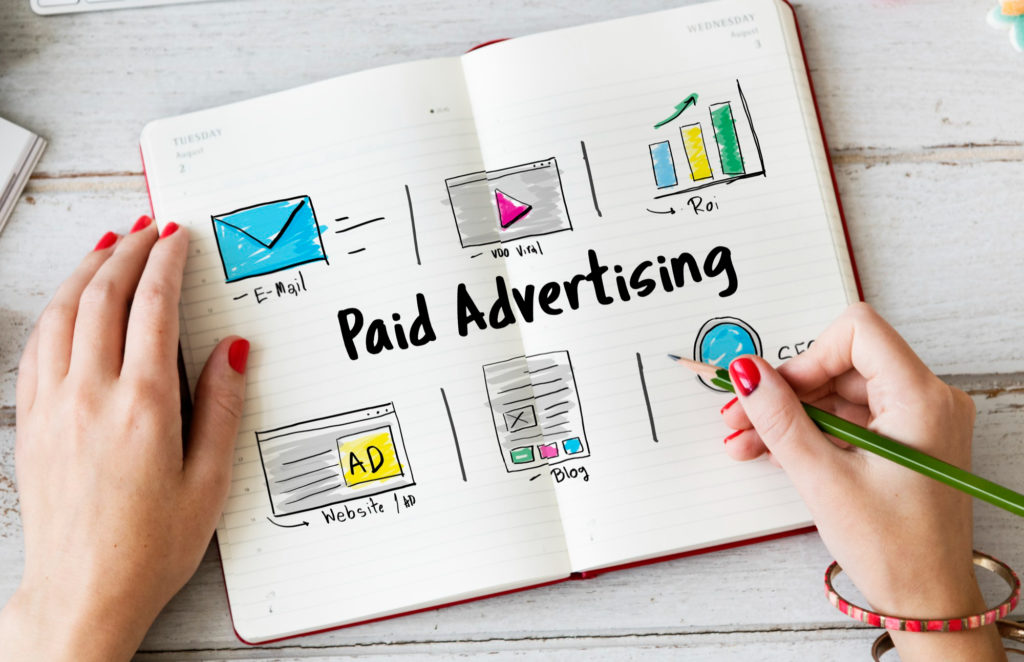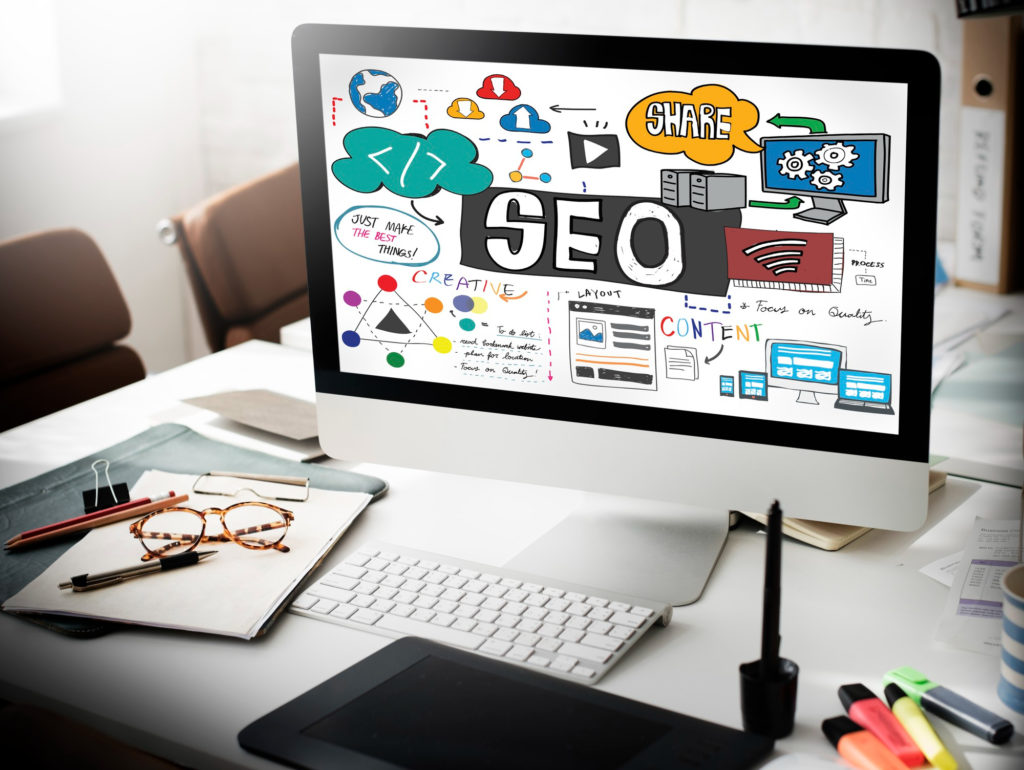
Mastering Digital Marketing: A Comprehensive Guide to Maximizing Effectiveness across Various Channels
In the ever-evolving digital landscape, businesses and marketers are constantly seeking effective ways to reach and engage their audiences. With the proliferation of digital platforms, the array of marketing methods has expanded dramatically, each offering unique benefits and challenges. Understanding these various approaches is crucial for any marketing strategy aiming to make a significant impact in today’s highly competitive environment. This introduction provides a brief overview of different marketing methods and underscores their importance in the current digital landscape.
The Diversity of Marketing Methods
The digital era has introduced a broad spectrum of marketing methods, each tailored to different goals and target audiences. These methods range from traditional approaches like newspaper advertisements and flyers to modern digital strategies like SEO, email marketing, and social media campaigns. Other methods include pop-ups, banner adverts, contextual ads, interstitial ads, press releases, email safelists, and more innovative approaches like viral videos and memes.
- Online Advertising: This includes pop-ups, banner ads, contextual ads, and interstitial ads. They are primarily used on websites and apps and offer targeted outreach.
- Search Engine Optimization (SEO): A cornerstone of digital marketing, SEO involves optimizing a website to rank higher in search engine results, thereby increasing organic traffic.
- Content Marketing: This method involves creating and sharing valuable content, such as articles, blogs, and videos, to attract and retain a target audience.
- Email Marketing: A direct marketing approach where businesses send promotional messages or newsletters to a list of subscribers via email.
- Social Media Marketing: Involves using platforms like Facebook, Twitter, and Instagram to connect with audiences, build brand awareness, and promote products or services.
- Offline Strategies: Though digital methods dominate, traditional approaches like newspaper advertisements, flyers, and door-to-door marketing still hold relevance in certain contexts.
Importance in the Digital Landscape
The importance of these marketing methods in the digital landscape cannot be overstated. With the majority of consumers now online, digital marketing strategies have become indispensable for businesses to remain visible and relevant. The internet’s expansive reach allows businesses to connect with a global audience, while targeted advertising technologies enable them to reach specific demographics more effectively than ever before.
- Audience Engagement: Digital marketing methods provide interactive platforms for engaging with customers, allowing for immediate feedback and fostering a sense of community.
- Data-Driven Decisions: The digital realm offers unprecedented access to data, enabling marketers to make informed decisions based on customer behavior, preferences, and trends.
- Cost-Effectiveness: Many digital marketing methods are more cost-effective compared to traditional advertising, offering smaller businesses a more level playing field.
- Customization and Personalization: Digital methods allow for high levels of customization, ensuring that messages are tailored to the interests and behaviors of specific audience segments.
- Measurable Results: The ability to track and measure the effectiveness of digital marketing campaigns in real-time is a significant advantage, allowing for agile adjustments and optimization.
Understanding and effectively utilizing these diverse marketing methods is essential for any successful digital marketing strategy. Each method offers unique advantages and can be employed to achieve specific marketing objectives, whether it’s increasing brand awareness, driving traffic, or boosting sales. As the digital landscape continues to evolve, staying abreast of these methods and their evolving dynamics will be crucial for businesses looking to thrive in the digital age.
Section 1: Online Advertising

Pop-Ups: Intrusive Yet Potentially Effective
Definition and Mechanics
Pop-ups are a form of online advertising that appear over or in front of the content a user is viewing. They are often used to capture attention or prompt an action from the user. These can be in various forms, including small windows that pop up when a user enters or exits a webpage, or modal overlays that appear while browsing.
How They Work
Pop-ups are typically triggered by specific actions taken by users, such as entering a website, scrolling to a certain point on a page, or indicating an intent to leave. They can also be timed to appear after a user has spent a certain amount of time on a site. Advanced pop-ups are responsive to user behavior, using algorithms to determine the optimal time for display.
Advantages
- Immediate Visibility: Pop-ups command immediate attention by interrupting the user’s browsing experience, thereby ensuring visibility of the message.
- Potential for High Engagement: If designed creatively and relevantly, pop-ups can engage users effectively, prompting actions like newsletter sign-ups, special offer redemptions, or alerting users to important information.
- Customization and Targeting: Pop-ups can be customized to target specific audience segments, increasing their relevance and effectiveness.
- Versatility: They can be used for a variety of purposes, from lead generation and sales promotions to important announcements and user feedback collection.
Disadvantages
- Intrusiveness: Pop-ups interrupt the user experience, which can be annoying and disruptive, potentially driving users away from the site.
- Negative Brand Perception: Overuse or poorly designed pop-ups can lead to a negative perception of the brand, associating it with spam-like tactics.
- Ad Blocking: The rise in the use of ad blockers has significantly reduced the effectiveness of pop-ups, as more users choose to block these kinds of intrusive ads.
- Mobile Unfriendliness: On mobile devices, where screen real estate is limited, pop-ups can be particularly obstructive and can negatively impact the user experience.
Average Conversion Rates
While conversion rates for pop-ups vary widely based on their design, placement, and relevance, they generally have an average conversion rate of around 3%. Well-executed pop-ups, particularly those that are behaviorally targeted and offer value, can reach conversion rates as high as 9%. However, it’s important to balance the potential benefits against the risk of alienating users.
In summary, while pop-ups can be an effective tool for capturing user attention and encouraging action, they must be used judiciously and thoughtfully to avoid the pitfalls of user annoyance and negative brand impact. The key to successful pop-up use lies in understanding the audience, providing value, and maintaining a balance that respects the user experience.
Banner Adverts: The Classic Online Advertising Staple
Description and Usage
Banner adverts are a staple of online advertising, consisting of rectangular graphics displayed on websites. They range in size and are typically positioned at the top, bottom, or sides of a web page. These adverts are designed to stand out from the site’s content and attract the attention of visitors, encouraging them to click through to a product, service, or promotional offer.
How They Work
Banner ads are often part of display advertising campaigns, which use a combination of visuals and text to convey a marketing message. They are hosted through ad networks or directly on specific websites. The effectiveness of banner ads is commonly measured in click-through rates (CTRs), indicating the percentage of viewers who clicked on the ad.
Advantages
- Brand Visibility: They provide significant exposure, reinforcing brand recognition even when users don’t click on the ad.
- Relatively Low Cost: Compared to other advertising forms, banner ads can be less expensive, offering a more affordable option for brand promotion.
- Targeting Options: Modern banner ads can be targeted based on user behavior, demographics, and interests, enhancing their effectiveness.
- Measurable Performance: Metrics such as CTR, impressions, and conversion rates provide clear insights into the ad’s performance.
- Design Flexibility: Creative freedom in design can make banner ads visually appealing and align them with the brand’s aesthetic.
Disadvantages
- Banner Blindness: Many users subconsciously ignore banner ads, reducing their effectiveness.
- Low Click-Through Rates: Banner ads generally have lower CTRs compared to other advertising formats, reflecting the challenge of engaging users.
- Ad Blocking Software: The widespread use of ad blockers can significantly reduce the visibility of banner ads.
- Potential for Intrusiveness: Large or animated banners can be perceived as intrusive or distracting, negatively impacting user experience.
- Limited Engagement: Banner ads are typically less engaging than more interactive forms of online advertising.
Average Conversion Rates
Banner ads typically have an average CTR of around 0.1%, though this can vary based on the ad’s relevance, design, and placement. Conversion rates, which measure the percentage of ad clicks resulting in a desired action (like a purchase), also vary but tend to be lower for banner ads compared to other forms of digital advertising.
While banner adverts are a tried-and-tested method of online advertising with advantages in cost and brand visibility, their effectiveness can be limited by user behavior and the prevalence of ad blocking. To maximize the impact of banner ads, it’s essential to focus on targeted placements, creative design, and continuous performance monitoring. Banner ads can be a valuable part of a broader digital marketing strategy, especially when combined with more interactive and engaging ad formats.
Contextual Ads: Targeting Content Relevance

Explanation and Relevance in Modern Marketing
Contextual ads are a form of targeted advertising that involves placing ads on web pages based on the content of those pages. These ads are selected and served by automated systems based on the identity and relevance of the content. In modern marketing, contextual ads have gained prominence due to their ability to offer relevant advertisements to users based on their current interests and content interaction, rather than relying on past behavior or browsing history.
How They Work
Contextual advertising systems scan the text of a webpage for keywords and return advertisements to the webpage based on those keywords. For example, an article about travel might display ads for hotels or flights. This method ensures that the audience viewing the ad is already interested in the subject matter, potentially increasing engagement.
Advantages
- Highly Targeted: Contextual ads are directly related to the content the user is already interested in, making them more relevant and potentially more effective.
- User Privacy-Friendly: Since they don’t rely on user data or history, they are less intrusive and more privacy-conscious, a significant advantage in the era of increased privacy awareness.
- Improved User Experience: Ads that match the content can feel less intrusive and more like a natural part of the user’s browsing experience.
- Avoids Ad Fatigue: Since ads are varied and based on the content being viewed, they are less likely to cause ad fatigue among users.
Disadvantages
- Sophisticated Targeting Required: Effective contextual advertising requires sophisticated algorithms and keyword management to ensure relevancy and effectiveness.
- Potential for Misplacement: Inaccurate keyword targeting can lead to ads that are out of place, reducing their effectiveness and potentially harming the brand’s reputation.
- Limitation on Reach: Since these ads are content-specific, they may not reach users who are not actively engaging with relevant content.
- Ad Blockers: Like other forms of digital advertising, contextual ads are susceptible to being blocked by ad blockers.
Average Conversion Rates
The average conversion rates for contextual ads can vary greatly based on the industry, the quality of the ads, and the relevance of the placement. However, because of their targeted nature, they often have higher conversion rates compared to non-targeted ads. The conversion rates can range anywhere from 0.5% to 2.5%, significantly higher than general display ads.
Contextual ads offer a highly targeted and user-friendly advertising option in the digital marketing landscape, aligning with both user interests and content relevance. The key to their effectiveness lies in sophisticated targeting and placement, ensuring that these ads reach the right audience at the right time. As privacy concerns continue to grow, contextual advertising presents a viable alternative to more intrusive forms of online advertising.
Interstitial Ads: Full-Screen Engagement
What They Are and How They’re Used
Interstitial ads are full-screen ads that cover the interface of their host application or website. These ads appear at natural transition points in the flow of an app, such as between activities or during the pause between game levels. They’re used to capture user attention by taking advantage of these pauses in activity, offering a full-screen, immersive advertising experience.
How They Work
These ads often have a set display time before a user can dismiss them or choose to engage with the ad content. This method ensures that the user’s attention is fully captured, making them effective for branding and promoting new products or services.
Advantages
- Full-Screen Attention: Interstitial ads capture the entire screen, providing advertisers with a valuable space to deliver their message without competing elements.
- Effective for Branding: The full-screen format allows for creative and impactful branding opportunities.
- Higher Engagement Rates: Due to their prominent placement, these ads often see higher engagement rates compared to other ad formats.
- Controlled Display Timing: Advertisers can choose strategic times to display these ads, optimizing their impact.
Disadvantages
- Potential Disruption: If not timed correctly, interstitial ads can disrupt the user experience, causing frustration and annoyance.
- Negative User Experience: Intrusive ads can lead to a negative perception of the advertised brand and the host application.
- High Skip Rates: Users may quickly close these ads as soon as possible, reducing their effectiveness.
- Impact on App Ratings: In mobile applications, intrusive ads can lead to lower app ratings and negative reviews.
Average Conversion Rates
The conversion rates for interstitial ads can be higher than other ad formats due to their prominence and size. However, this is contingent on how well they are integrated into the user experience. Typical conversion rates for well-implemented interstitial ads can range from 1% to 3%. However, poorly timed or overly intrusive interstitial ads can have much lower effectiveness and even negative impacts.
Interstitial ads offer a powerful tool for advertisers seeking high visibility and engagement. Their success depends greatly on how they are integrated into the user experience. When used judiciously and creatively, they can be a significant asset in a digital marketing strategy. However, balancing their intrusive nature with a positive user experience is crucial to avoid backlash and negative brand associations.
Section 2: SEO and Content Marketing

SEO (Organic Marketing): Navigating the Digital Terrain
Basics of SEO and Its Importance in Digital Marketing
SEO, or Search Engine Optimization, is a foundational element of digital marketing that focuses on enhancing a website’s visibility in organic (non-paid) search engine results. This technique involves optimizing various aspects of a website — including content, structure, and on-page elements like meta tags and keywords — to improve its ranking on search engine results pages (SERPs).
SEO is crucial in digital marketing as it directly influences how easily a target audience can discover a brand or product through search engines. A well-optimized site not only ranks higher in search results but also appears more credible and trustworthy to potential customers.
Advantages of SEO
- Long-Term Benefits: Unlike paid advertising, the effects of a well-executed SEO strategy can last for a long time, offering sustained visibility and traffic without the need for continual investment.
- Credibility and Trust: Websites that rank high in search results are often perceived as more trustworthy and credible by users.
- Cost-Effectiveness: SEO is generally more cost-effective than paid search strategies, especially for small businesses or startups.
- Enhanced User Experience: SEO often involves optimizing the website’s usability and user experience, which can lead to higher engagement and conversion rates.
- Targeted Traffic: Effective SEO strategies help attract a more targeted audience, potentially leading to higher conversion rates.
Disadvantages of SEO
- Time-Consuming: Achieving significant improvements in search rankings can be a slow process, often taking months or even years.
- Requires Expertise: SEO is a complex field that requires a deep understanding of various factors, including search engine algorithms, which are constantly evolving.
- No Guaranteed Results: Despite best efforts, the ever-changing nature of search algorithms means there are no guaranteed outcomes in SEO.
- Vulnerability to Algorithm Changes: SEO strategies are subject to the whims of search engine algorithm updates, which can negatively impact rankings without warning.
Average Conversion Rates
SEO typically has higher conversion rates compared to many other marketing strategies, as it targets users who are actively searching for specific products or services. The average SEO conversion rate can vary widely depending on the industry, quality of the SEO strategy, and the competitiveness of the keywords targeted. However, a well-optimized site can see average conversion rates ranging from 2% to 5%.
While SEO requires significant time and expertise, its long-term benefits and cost-effectiveness make it an essential part of any comprehensive digital marketing strategy. The ability to draw in a targeted, engaged audience not only increases the likelihood of conversions but also enhances the overall credibility and trustworthiness of a brand.
Copywriting: Crafting Words that Convert

Role of Copywriting in Marketing and Types of Copy
Copywriting is the art and science of strategically delivering words (whether written or spoken) that get people to take some form of action. It plays a crucial role in marketing as it’s the voice behind most sales communications, from advertisements and web content to brochures and emails. There are various types of copywriting, including but not limited to:
- SEO Copywriting: Focused on creating content that is not only engaging but also optimized for search engines.
- Advertising Copywriting: Primarily used in creating compelling advertisements.
- Content Copywriting: Involves writing informational and educational material like blog posts, articles, and whitepapers.
- Technical Copywriting: Involves creating content for technical and specialized fields.
- Creative Copywriting: Writing that is more artistic and often seen in storytelling and brand narratives.
Advantages of Copywriting
- Engages the Audience: Good copywriting captures the attention of the audience and keeps them engaged.
- Drives Action: Effective copy can persuade readers to take a specific action, such as making a purchase, subscribing to a newsletter, or following a call to action (CTA).
- Builds Brand Voice: Copywriting helps in establishing and maintaining a consistent brand voice, enhancing brand recognition.
- Improves SEO: SEO-focused copywriting boosts a website’s visibility in search engines, driving more organic traffic.
- Educates and Informs: Copywriting can be used to educate the audience about a product, service, or topic, helping to guide decision-making.
Disadvantages of Copywriting
- Requires Skilled Writers: Effective copywriting requires a specific skill set, including a good grasp of language, understanding of consumer psychology, and creativity.
- Time-Intensive: Crafting high-quality copy that resonates with the audience can be time-consuming.
- Subject to Subjectivity: Sometimes, what makes ‘good’ copy can be subjective and vary greatly between audiences.
- Constant Need for Fresh Content: In the digital age, there is a continuous need for new, engaging content, which can be resource-intensive.
- Risk of Misinterpretation: Poorly written copy can be misinterpreted, potentially harming a brand’s reputation.
Average Conversion Rates
The conversion rate of copywriting can vary widely based on the type of copy, the target audience, and the context in which it’s used. However, well-written and strategically crafted copy typically sees higher engagement and conversion rates. For instance, a compelling email campaign can have conversion rates ranging from 1% to 5%, while a well-written landing page can see conversion rates from 2.5% to 5.5% or even higher, depending on the industry and offer.
Copywriting is a fundamental element of marketing that carries the power to influence and persuade. While it requires skilled execution and can be time-consuming, the potential it has to engage audiences and drive meaningful action makes it an invaluable tool in any marketer’s arsenal. The right words, framed in the right way, can significantly boost conversion rates and contribute substantially to the success of marketing campaigns.
Press Releases: Bridging Information and Publicity

Purpose and Execution of Press Releases
Press releases are official statements issued to newspapers, magazines, and other media to announce a range of news items, including but not limited to product launches, events, updates, and executive appointments. They serve as a primary tool for public relations, aiming to capture the attention of journalists and editors for further media coverage.
Execution of a press release involves several key steps:
- Identifying the Newsworthy Item: Deciding on a compelling and relevant topic that merits a press release.
- Writing the Release: Crafting a clear, concise, and engaging narrative that encapsulates the key message.
- Incorporating Essential Details: Ensuring all relevant information like quotes, dates, facts, and figures are included.
- Following Press Release Format: Adhering to the standard structure and format of a press release.
- Distributing: Sending the release to targeted media outlets, journalists, or using a press release distribution service.
Advantages of Press Releases
- Broad Reach: Press releases can reach a wide audience quickly, especially when distributed through large networks or wire services.
- Authority Building: Being featured in reputable media outlets builds credibility and authority for the company or individual.
- Cost-Effective Marketing: Compared to traditional advertising, press releases can be a more affordable way to get the word out.
- SEO Benefits: Online press releases can improve search engine optimization (SEO) with strategic use of keywords and backlinks.
- Control Over the Message: Offers the opportunity to control how your business and news are presented to the public.
Disadvantages of Press Releases
- Can Be Expensive: While writing a press release might be cost-effective, distribution, especially through top-tier wire services, can be expensive.
- No Guaranteed Pickup: There is no assurance that media outlets will publish or broadcast the press release.
- Competition for Attention: The high volume of press releases issued daily means that only a few stand out and grab media attention.
- Requires Newsworthy Content: Not all company news is worthy of a press release, and creating compelling content can be challenging.
- Risk of Misinterpretation: If not clearly written, the key message of the press release can be misunderstood or misrepresented by the media.
Average Conversion Rates
The effectiveness of a press release is generally measured by its ability to generate media coverage rather than direct conversion rates. However, when measuring the impact of a press release in terms of generated leads or direct responses, the average conversion rate can vary significantly. For online press releases that direct traffic to a website, conversion rates can range from 1% to 5%, depending on the nature of the news, the quality of the release, and the relevance to the target audience.
Press releases are a valuable tool for disseminating news and building brand authority. While they come with their own set of challenges, including cost and uncertainty of media pickup, the potential benefits in terms of reach and credibility make them an integral part of a comprehensive marketing and public relations strategy. Their role in supporting SEO and the ability to control the narrative further underscore their importance in the digital age.
Section 3: Direct and Email Marketing

Email Marketing: A Key Player in Digital Strategy
Importance and Methods of Email Marketing
Email marketing remains one of the most effective digital marketing strategies. It involves sending emails to prospects and customers with the goal of converting prospects into customers and turning one-time buyers into loyal, raving fans.
Key methods in email marketing include:
- Newsletter Campaigns: Regular updates about the company, products, or industry news.
- Transactional Emails: Triggered by customer’s actions, like order confirmations.
- Welcome Series: Introducing new subscribers to the brand.
- Promotional Campaigns: Advertising products, services, or events.
- Segmented Campaigns: Tailoring messages to different segments of the audience based on behavior or demographics.
- Automated Email Journeys: Based on user behavior or triggers, guiding them through a pre-defined pathway.
Advantages of Email Marketing
- High ROI: Email marketing offers a significant return on investment, often cited as one of the most cost-effective marketing strategies.
- Direct Customer Contact: It allows direct communication with customers, facilitating personalized engagement.
- Measurable: Analytics provide insights into open rates, click-through rates, and conversions, making its impact quantifiable.
- Automation Potential: Many aspects of email marketing can be automated, saving time and resources.
- Flexibility: Emails can be tailored to fit a variety of marketing objectives and can include different types of content.
Disadvantages of Email Marketing
- Spam Filters: Emails can be marked as spam by email providers, reducing visibility.
- Over-saturation: Customers often receive a large number of marketing emails, leading to email fatigue.
- Design and Delivery Issues: Poorly designed emails may not display correctly across different email clients.
- Data Privacy Regulations: Compliance with laws like GDPR requires careful handling of customer data.
- Time-Consuming: Crafting compelling and effective email content can be time-intensive.
Average Conversion Rates
The average conversion rate for email marketing varies based on industry, type of campaign, and target audience, but it generally falls within the range of 2% to 5%. This rate can be higher for well-segmented, targeted campaigns or specific industries with highly engaged audiences. For instance, welcome emails often have higher conversion rates compared to standard promotional emails, reflecting the importance of timing and relevance in email marketing.
Email marketing’s high ROI and direct line to customers make it an invaluable component of digital marketing. While challenges like spam filters and over-saturation exist, the benefits of personalization, measurability, and automation make it a powerful tool for nurturing customer relationships and driving conversions. The effectiveness of email marketing lies in its ability to adapt to the evolving needs of both the business and its audience, making it a versatile and essential strategy for any marketer’s toolbox.
Email Safelists: Niche Marketing Through Controlled Lists

Explanation and Usage of Email Safelists
Email Safelists are a specialized form of email marketing, primarily used in niche marketing. They consist of groups of people who have agreed to receive emails from other members of the list. The idea is that by joining a safelist, members consent to receiving emails, thus bypassing the typical spam filters and ensuring their messages reach an audience.
Typical usage involves:
- Joining a Safelist Platform: Marketers sign up for a safelist service.
- Agreeing to Receive Emails: Members consent to receive emails from other list members.
- Sending and Receiving Emails: Members send out their promotional content while also receiving emails from others.
- Earning Credits: Often, reading emails from others earns credits that can be used to send one’s own emails.
Advantages of Email Safelists
- Targeted Audience: Members of safelists are generally interested in specific niches, making it easier to target relevant audiences.
- Consent-Based: As members have agreed to receive emails, there is a higher chance of emails being read and not marked as spam.
- Cost-Effective: Many safelist services are inexpensive or even free, making them accessible to small businesses or individual marketers.
- Networking Opportunities: They provide a platform for networking with other marketers in similar niches.
Disadvantages of Email Safelists
- Limited Reach: The audience size is often limited to the members of the safelist, which can be relatively small.
- Questionable Effectiveness: Many members join safelists primarily to send emails, not to read or engage with others’ emails, leading to low engagement rates.
- Low Quality of Leads: The leads generated from safelists may not always be of high quality or genuinely interested in the products or services.
- Time-Consuming: Earning credits by reading emails can be time-consuming and detract from more productive marketing activities.
Average Conversion Rates
The average conversion rates for email safelists are typically lower than other forms of email marketing. They can range from as low as 0.1% to 1%, significantly lower than industry averages for other email marketing strategies. This low rate is primarily due to the nature of safelists, where members are more focused on sending their emails than engaging with received content.
While email safelists offer the advantage of a targeted and consent-based audience, they are limited by their reach and effectiveness. The leads generated through safelists may not always translate into high-quality engagements or sales, making them a more suitable option for niche or low-cost marketing efforts. As a part of a broader marketing strategy, safelists can be utilized for specific purposes but should not be relied upon as a primary source of leads or conversions.
Newspaper Advertisements: Blending Tradition with the Digital Era

Traditional vs Digital Newspaper Advertisements
Newspaper advertisements have long been a staple of traditional marketing, but they have evolved to include both print and digital formats. Traditional newspaper ads appear in physical copies of newspapers, often local or national publications, while digital ads are featured on the online versions of these newspapers.
Traditional Newspaper Ads:
- Print Format: Ads printed in daily or weekly newspapers.
- Local Focus: Often target local communities and demographics.
Digital Newspaper Ads:
- Online Platforms: Appear on the digital versions of newspapers.
- Broader Reach: Can reach a wider, even global audience.
Advantages of Newspaper Advertisements
- Local Targeting: Traditional ads are excellent for targeting local markets, making them ideal for local businesses.
- Trusted Medium: Newspapers, especially established ones, are often trusted sources, lending credibility to the ads they feature.
- Diverse Formats: Options ranging from small classifieds to full-page spreads allow for diverse marketing strategies.
- Engaged Readership: Regular readers often have a habit of perusing ads, especially in local papers.
Disadvantages of Newspaper Advertisements
- Declining Readership: With the rise of digital media, traditional newspaper readership has declined, reducing the effectiveness of print ads.
- One-Time Exposure: Newspaper ads are typically seen once, and then the paper is discarded, limiting the duration of exposure.
- Cost-Effectiveness: Especially for larger ads, the cost can be high compared to other advertising mediums.
- Limited Interactivity: Print ads lack the interactive features of digital ads, such as clickable links or video content.
Average Conversion Rates
The average conversion rates for newspaper advertisements can be challenging to track, especially for print ads. However, they are generally lower compared to digital marketing strategies. Conversion rates for traditional newspaper ads tend to range from about 0.5% to 1.5%. Digital newspaper ads may achieve slightly higher rates due to the ability to target more effectively and track interactions.
For local businesses or campaigns seeking to build trust and credibility, newspaper advertisements, both traditional and digital, can be an effective tool. They are particularly beneficial for reaching an older demographic or those in less digitally-savvy communities. However, the declining readership of traditional newspapers and the one-time nature of the exposure should be considered when allocating marketing budgets. The choice between traditional and digital newspaper advertising should be guided by the target audience’s preferences and the specific goals of the advertising campaign.
Flyers Posted Through Doors: A Direct Marketing Tactic

Understanding the Direct Marketing Strategy of Door Flyers
Flyers posted through doors represent a direct marketing strategy where printed materials are physically distributed to residences or businesses. This approach is often used for local advertising, community announcements, or promotions by small businesses.
Advantages of Door-to-Door Flyer Distribution
- Localized Marketing: Flyers are an excellent way to target specific neighborhoods or localities, making them ideal for businesses catering to local communities.
- Tangible Interaction: Unlike digital ads, flyers provide a physical interaction with potential customers. They can hold, read, and refer back to the flyer at their convenience.
- Creative Flexibility: Flyers allow for creative designs, including the use of images, colors, and various formats to attract attention.
- Inclusive Reach: Reaches all demographics, including those less inclined to use digital platforms.
Disadvantages of Flyers Posted Through Doors
- Cost of Physical Production: Designing, printing, and distributing flyers can be costly, especially for high-quality prints.
- Environmental Concerns: The use of paper and the subsequent waste generated can be a concern for environmentally conscious consumers and businesses.
- Often Ignored or Discarded: Many people consider flyers as unsolicited mail and may disregard them without reading.
- Limited Tracking and Feedback: Unlike digital ads, it’s challenging to track the effectiveness of a flyer campaign, making ROI calculations difficult.
Average Conversion Rates
Conversion rates for flyers posted through doors are generally lower compared to digital marketing methods. On average, conversion rates can range from 1% to 3%. This rate is influenced by factors such as the design of the flyer, the clarity of the call-to-action, the relevance of the offer to the targeted audience, and the distribution area.
For businesses, especially local enterprises or those with a specific target demographic within a particular geographic area, flyer distribution can be an effective tool. However, it’s important to weigh the costs of production and distribution against the potential return. Additionally, in an increasingly digital world, combining traditional tactics like flyers with online marketing strategies can lead to more effective and comprehensive marketing campaigns.
When using flyers, it’s crucial to create visually appealing designs with a clear and compelling message. Including offers or discounts can also improve engagement and conversion rates. Businesses should also consider the environmental impact of their flyer campaigns and explore eco-friendly options such as using recycled paper or digital alternatives where appropriate.
Section 4: Video and Social Media Marketing
Preroll VAST Adverts: Integrating Advertising into Video Content

Understanding Preroll VAST Adverts in Video Streaming
Preroll VAST (Video Ad Serving Template) adverts are video advertisements that play before the main content in a video stream. They are a standard format in online video advertising, allowing advertisers to serve video ads from their ad servers across various video platforms.
Advantages of Preroll VAST Adverts
- Captive Audience: Viewers are more likely to watch these ads as they wait for their desired content, leading to higher engagement.
- High Engagement Potential: Video content is inherently engaging, and well-produced adverts can capture viewers’ attention effectively.
- Rich Media Experience: These ads offer a dynamic and interactive experience, often leading to better brand recall.
- Targeting Capabilities: Advanced targeting options allow for ads to be shown to specific demographics, increasing relevance and effectiveness.
- Metrics and Analytics: Provides robust data on viewer engagement, such as view counts, skip rates, and interaction rates.
Disadvantages of Preroll VAST Adverts
- Annoyance Factor: If not executed well, preroll ads can annoy viewers, especially if they are intrusive or irrelevant.
- Skip Options: Many platforms allow users to skip the ad after a few seconds, reducing the exposure time.
- Ad-Blocking Software: The rise of ad-blocking tools can limit the reach of these adverts.
- Production Costs: Creating high-quality video content for ads can be expensive and time-consuming.
- Potential for Negative Brand Perception: Intrusive or repetitive ads can lead to negative perceptions of the advertised brand.
Average Conversion Rates
Preroll VAST adverts typically have a higher engagement rate compared to other forms of digital advertising, but this can vary widely based on the content and target audience. Average conversion rates for preroll adverts range from 0.5% to 3%. Factors affecting these rates include the quality of the ad content, relevance to the target audience, and the overall user experience on the platform where the ad is served.
For advertisers, preroll VAST adverts offer a valuable opportunity to engage with audiences in a visually rich and dynamic format. To optimize effectiveness, these ads should be compelling, concise, and relevant to the viewer. The use of storytelling, humor, or emotional appeal can enhance engagement and reduce the likelihood of viewers skipping the ad. Additionally, aligning the advert’s content with the interests of the target audience and the nature of the main video content can improve reception and effectiveness.
It’s crucial for advertisers to monitor metrics such as view completion rates and interaction rates to gauge the performance of their preroll ads. Continuous optimization based on viewer feedback and analytics is key to maximizing the impact and ROI of preroll VAST adverts in a digital marketing strategy.
The Role of Digital Newsletters in Modern Marketing
Newsletters have become a cornerstone in the digital marketing world. They are periodic emails sent to a list of subscribers, containing news, updates, tips, and promotional content related to a business or organization. With the rise of digital marketing, newsletters serve as a vital tool for maintaining regular contact with customers and leads.
Advantages of Newsletters
- Regular Engagement: Newsletters keep your audience engaged with your brand by providing regular updates and information.
- Content Distribution: They are an excellent channel for distributing various content types, including blog posts, product updates, and industry news.
- Builds Relationships: By providing valuable content, newsletters can help build and strengthen relationships with customers.
- Drives Traffic: Redirecting readers to your website or landing pages can increase traffic and potential conversions.
- Cost-Effective: Compared to other marketing channels, newsletters are relatively inexpensive to create and distribute.
- Targeted Marketing: Newsletters can be customized and segmented to cater to different parts of your audience, ensuring relevance.
- Measurable Results: The effectiveness of newsletters can be easily tracked through open rates, click-through rates, and conversion rates.
Disadvantages of Newsletters
- Consistent Content Creation: Requires a steady stream of quality content, which can be resource-intensive.
- Over-saturation: With many companies sending newsletters, it’s easy for your message to get lost in a crowded inbox.
- Time and Management: It requires time and effort to manage a newsletter campaign effectively, from content creation to distribution and analysis.
- Risk of Unsubscriptions: If content is not engaging or too frequent, there’s a risk of subscribers opting out.
- Spam Filters: There’s always a risk that newsletters will end up in the spam folder, reducing visibility.
Average Conversion Rates
The average conversion rate for newsletters can vary significantly based on industry, content quality, and audience engagement. Generally, the average conversion rates range from 1% to 5%. Businesses that provide highly engaging and relevant content tailored to their audience’s interests tend to see higher conversion rates.
For newsletters to be effective, they must offer value to the subscriber. This can be achieved through exclusive content, special offers, insider information, or educational material. The key is to understand the audience’s needs and preferences and craft newsletters that resonate with them. Personalization, using the subscriber’s name and tailoring content based on their past interactions, can significantly improve engagement and conversions.
Visual appeal is also essential in newsletters. A well-designed, easy-to-navigate layout with a clear call-to-action can enhance user experience and lead to better results. Furthermore, optimizing newsletters for mobile devices is crucial, as a significant portion of emails are read on smartphones and tablets.
While newsletters require commitment and strategy, they are a powerful tool for building relationships, enhancing brand loyalty, and driving conversions. With the right approach, they can be a highly effective component of a broader digital marketing strategy.
Social Network Marketing: Enhancing Brand Presence on Diverse Platforms

Introduction to Social Network Marketing
Social network marketing is a critical strategy in today’s digital landscape, enabling brands to connect with a broad audience across various online platforms. It involves leveraging social media networks to promote products and services, engage with customers, and build brand awareness.
Key Social Networks for Marketing
- Snipesocial (snipesocial.net): A privacy-centric platform ideal for targeted community engagement.
- Snipesearch Toot (toot.snipesearch.co.uk): Offers decentralized social networking, great for tech-savvy audiences.
- TTWrite (ttwrite.4up.eu): A microblogging platform for concise, impactful communication.
- X (Formerly Twitter): Facilitates real-time engagement and trend-based marketing.
- Facebook (facebook.com): Suitable for targeted ads and community building.
- Threads (From META): Streamlines sharing updates and connecting with audiences.
- VK (vk.com): Popular in European markets, offering international reach.
- Tumblr (tumblr.com): A blogging platform, perfect for creative content.
- Reblogme: Ideal for viral content and multimedia interaction.
- Instagram (instagram.com): Focuses on visual storytelling and influencer marketing.
- TikTok (tiktok.com): Known for short-form video content, appealing to younger demographics.
Advantages of Social Network Marketing
- Wide Reach: Platforms like Facebook and Instagram offer access to a vast global audience.
- High Engagement: Interactive platforms like TikTok engage users creatively and personally.
- Targeted Strategies: Advanced targeting options enable precise audience reach.
- Content Versatility: Each platform allows different content formats, from videos to blogs.
- Direct Engagement: Platforms facilitate direct interaction, fostering stronger customer relationships.
Disadvantages of Social Network Marketing
- Time-Intensive: Constant updates and management are required.
- Rapid Changes: Frequent platform algorithm changes necessitate adaptability.
- Public Feedback: Open platforms can lead to unfiltered public criticism.
- High Competition: Standing out in a crowded digital space is challenging.
- Platform Dependence: Relying heavily on platforms can be risky if policies change.
Average Conversion Rates
Conversion rates in social network marketing vary, influenced by factors like platform choice, content quality, and audience engagement. Typically, rates range from 1% to 4%, with visually-oriented platforms like Instagram potentially offering higher conversions. Platforms catering to niche audiences, like Snipesocial, may provide more focused engagement and higher conversion rates within specific communities.
Social network marketing is an indispensable tool in the digital marketing arsenal. The success of a social media campaign largely depends on choosing the right platform, aligning with the brand’s goals, and understanding the unique audience each platform caters to. Despite the challenges, the potential for brand growth and customer engagement makes social network marketing a vital strategy for businesses of all sizes.
Viral Videos and Memes: The Dynamics of Digital Contagion
Understanding the Phenomenon of Virality
Viral videos and memes represent a unique facet of digital marketing, characterized by their ability to spread rapidly across the internet. This phenomenon hinges on the content’s appeal, relatability, and shareability, striking a chord with a wide audience and encouraging users to pass it along.
Advantages of Viral Marketing
- Massive Reach: Viral content can quickly reach millions, transcending geographical and demographic barriers.
- High Engagement: Engaging and entertaining content encourages interaction, comments, and shares.
- Cost-Effective: Often, viral content requires minimal investment compared to traditional marketing methods.
- Brand Exposure: Successful viral content can significantly boost brand visibility and recognition.
- Community Building: Viral content often creates communities around shared interests or humor.
Disadvantages of Viral Marketing
- Unpredictability: What goes viral is often a gamble, with success hard to replicate.
- Risk of Misinterpretation: Without careful crafting, the message can be misunderstood or lead to unintended consequences.
- Short Lifespan: Viral content tends to have a brief window of popularity.
- Potential Backlash: If perceived negatively, it can harm rather than help brand reputation.
- Lack of Control: Once viral, content takes on a life of its own, making it difficult to manage or direct.
Average Conversion Rates
The average conversion rate for viral marketing campaigns is challenging to pinpoint due to the varied nature of content and audience reach. However, successful campaigns can see conversion rates between 2% to 5%, sometimes higher, depending on the content’s resonance with the target audience and the call-to-action’s effectiveness.
The Art and Science Behind Viral Content
Creating viral content involves a blend of creativity, understanding of social dynamics, and sometimes, just a stroke of luck. Factors contributing to virality include:
- Emotional Appeal: Content that evokes strong emotions, whether laughter, awe, or empathy, is more likely to be shared.
- Relatability: Memes or videos that reflect common experiences or feelings resonate with a broader audience.
- Timeliness: Content that taps into current trends, events, or pop culture has a higher chance of going viral.
- Shareability: Easy-to-share content, ideally with a compelling call-to-action, aids in spreading virally.
- Originality: Unique and creative content stands out in a crowded digital landscape.
Viral videos and memes offer an exciting avenue for digital marketing but require a nuanced approach to leverage their potential fully. While the rewards can be significant in terms of reach and engagement, the unpredictable nature of virality demands a balanced strategy, integrating viral potential with other consistent marketing efforts for sustained impact.
Conclusion: Navigating the Landscape of Digital Marketing Methods
The digital marketing landscape is a dynamic and multifaceted domain, with each marketing method offering unique benefits and challenges. From the immediacy of pop-ups to the comprehensive strategies of social network marketing, the effectiveness of these methods varies based on objectives, audience, and execution. This comprehensive exploration has highlighted the nuances of each approach, shedding light on their roles within the broader context of digital marketing.
Key Takeaways
- Diverse Strategies for Diverse Goals: Each marketing method serves specific purposes. While SEO and copywriting build long-term organic reach, banner adverts and interstitial ads offer immediate visibility. Understanding the specific goals of a campaign is crucial in selecting the appropriate methods.
- Balancing Advantages and Disadvantages: Every marketing technique comes with its pros and cons. For instance, email marketing boasts high ROI but risks being marked as spam. Weighing these factors is essential in crafting an effective strategy.
- Adapting to Technological Advances: The digital marketing space is continually evolving. Keeping abreast of new technologies, platforms, and user behaviors is imperative.
- Understanding Audience Behavior: The success of any digital marketing effort hinges on a deep understanding of the target audience. Customizing strategies to align with audience preferences and behaviors can significantly enhance effectiveness.
- Synergy Between Different Methods: Employing a combination of techniques can often yield the best results. For example, using SEO to drive organic traffic, supplemented by targeted contextual ads, can enhance overall campaign effectiveness.
- Measuring and Analyzing for Improvement: Utilizing analytics services like StatCounter or Rommie.net provides insights into the effectiveness of marketing strategies, allowing for data-driven adjustments and improvements.
The Future of Digital Marketing
As we look towards the future, the integration of AI, machine learning, and advanced data analytics is set to revolutionize digital marketing further. Personalization will become even more sophisticated, and new platforms will emerge, offering fresh avenues for reaching audiences.
Embracing Change and Innovation
Navigating the digital marketing landscape requires agility, creativity, and a willingness to adapt to change. By understanding the unique characteristics and potential of each marketing method, businesses and marketers can craft strategies that not only resonate with their audience but also drive meaningful engagement and conversions. As the digital world continues to evolve, staying informed, flexible, and innovative will be key to marketing success.